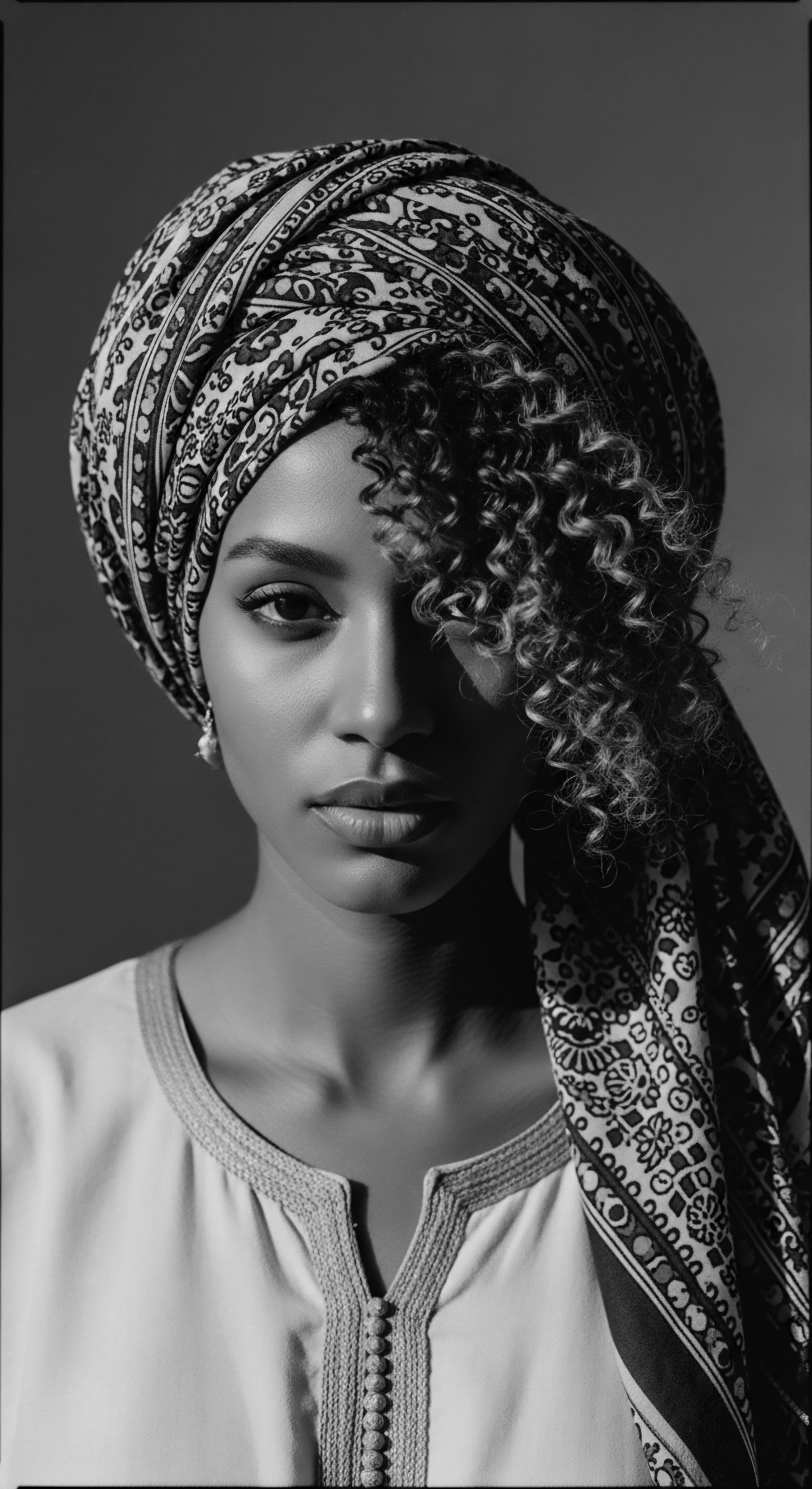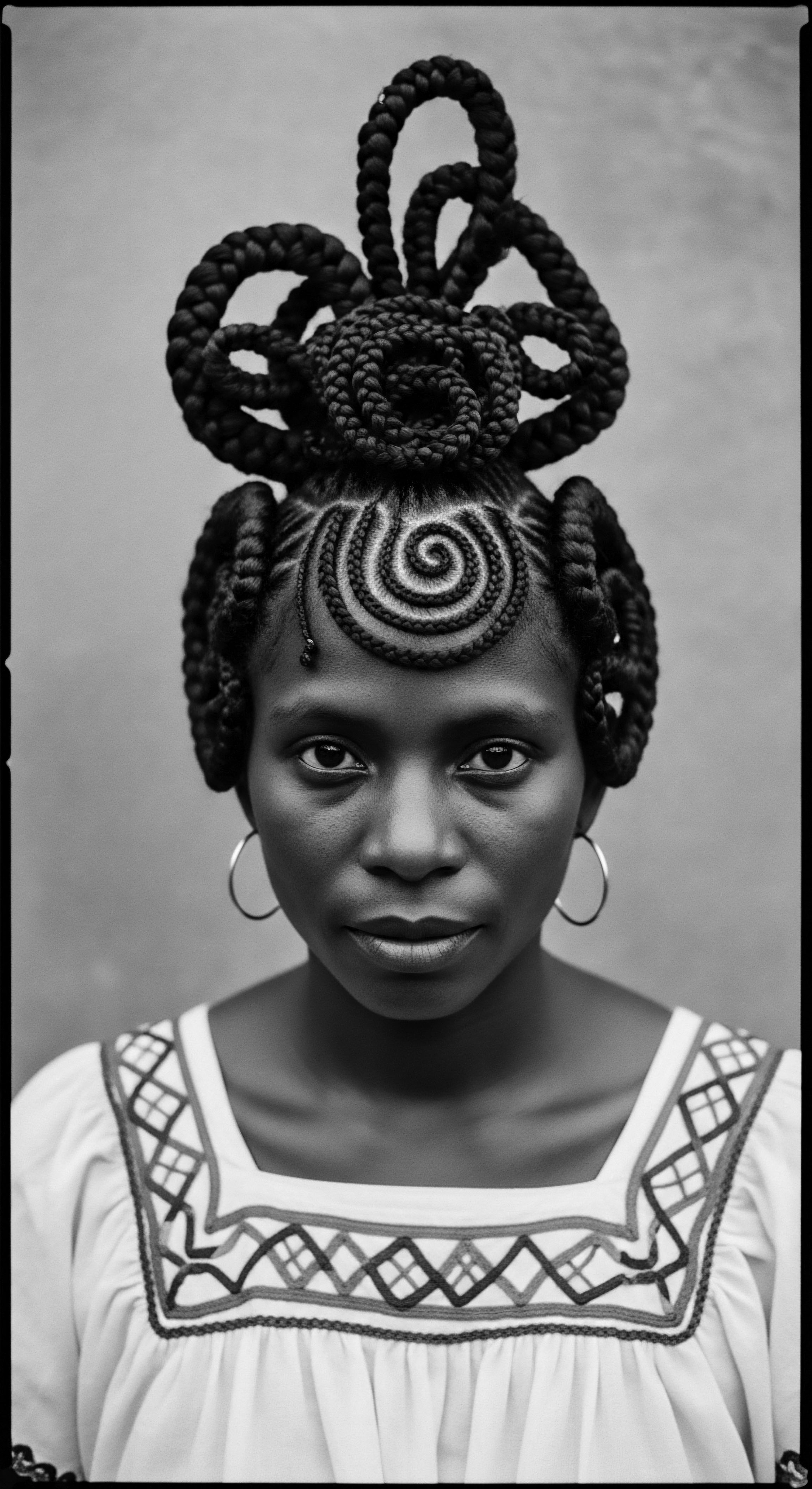
What is the historical link between hair and Black women’s resilience?
Textured hair is a historical conduit for Black women's resilience, embodying ancestral wisdom, cultural identity, and enduring strength.

How did Tignon Laws impact Black women’s hair heritage?
Tignon Laws forced free women of color to cover their hair, paradoxically igniting a heritage of defiant self-expression through elaborate headwraps and preserving hidden hair traditions.

What was the Tignon Law’s influence on Black women’s hair heritage?
The Tignon Law aimed to suppress Black women's visible identity, yet spurred creative defiance within textured hair heritage.

How did Black women defy the Tignon Law and preserve hair heritage?
Black women transformed headwraps into defiant statements of style, secretly maintaining intricate ancestral hairstyles beneath, preserving their textured hair heritage.

In what ways did historical bonnets serve as symbols of resilience for textured hair?
Historical bonnets served as symbols of resilience for textured hair by providing protection and preserving ancestral heritage despite oppression.

What impact did the Tignon Laws have on hair heritage?
The Tignon Laws compelled head coverings, unintentionally strengthening cultural identity and resourceful hair preservation among women of color.

How did Tignon Laws suppress Black women’s heritage?
The Tignon Laws suppressed Black women's visible hair heritage by mandating head coverings, but women transformed the wraps into artistic statements of defiance.

How did the Tignon Law influence Black women’s hair heritage?
The Tignon Law attempted to suppress the visual identity of Black women through their hair, inadvertently strengthening their cultural heritage and innovative styling.

What impact did the Tignon Laws have on Black women’s hair heritage?
The Tignon Laws inadvertently spurred creativity in headwrap artistry, strengthening Black women's hair heritage and defiant identity.

What does headwrap heritage signify?
Headwrap heritage signifies a profound connection to textured hair, symbolizing ancestral wisdom, cultural resilience, and defiant identity.

What was the main aim of Tignon Laws?
The Tignon Laws aimed to control free women of color by mandating head coverings, intending to suppress their social standing and inherent attractiveness.

How did the Tignon Law affect hair care?
The Tignon Law forced free Black women to cover their hair, but they transformed wraps into defiant expressions of cultural heritage.

How has shea butter supported Black women’s economic heritage?
Shea butter has been a bedrock of Black women's economic heritage, providing income, community bonds, and a link to textured hair traditions.

What historical meaning do head coverings hold for Black women?
Head coverings for Black women embody a rich heritage of protection, spiritual connection, and defiant identity for textured hair.

Why do Black women wear headwraps?
Black women wear headwraps to honor textured hair heritage, provide protection, and declare cultural identity.

How did historical laws impact head covering practices for Black women in the diaspora?
Historical laws coerced Black women to cover their hair, paradoxically transforming the practice into a profound symbol of cultural resilience and textured hair heritage.

What was the influence of the Tignon Laws on Black women’s hair heritage?
The Tignon Laws, by mandating head coverings, spurred creative resistance and deepened the cultural significance of Black women's textured hair heritage.

How did Tignon Law influence hair heritage?
The Tignon Law influenced hair heritage by forcing Black women to cover their hair, yet it ignited a powerful counter-movement of cultural defiance and headwrap artistry.

